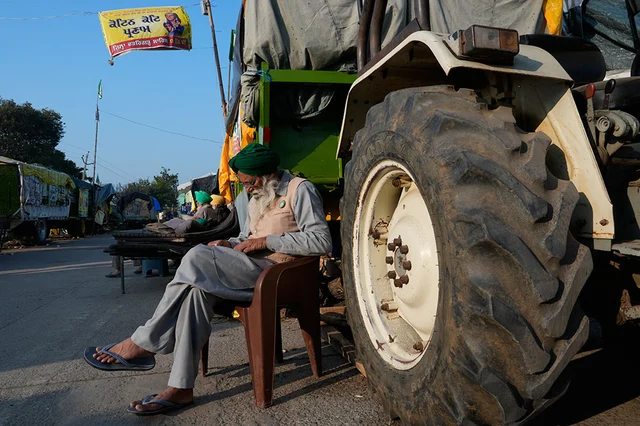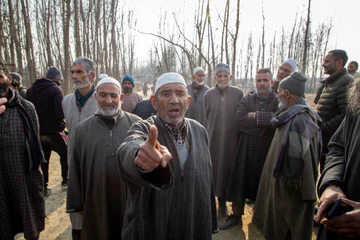
Punjab has a rich history of farmers’ protests, starting with the seven-month-long Pagri Sambhal O Jatta movement in 1907 against three colonial laws. This was followed by the prolonged Muzara (tenant) movement, which eventually led to the abolition of Biswedari (landlordship) in 1952. The state also has a long tradition of farmer unionization, with the Punjab unit of the All India Kisan Sabha being established in 1943. More recently, the state witnessed the massive farmers’ protest from 2020 to 2021 against three farm laws enacted by the central government. Farmers from Haryana and western Uttar Pradesh joined this agitation, which led to the eventual repeal of the laws. These laws were seen as “hard reforms” for three reasons: they were direct and politically visible, they threatened to negatively impact many farmers, and they mobilized organized opposition through farmers’ unions. Given the democratic pressure, it was not surprising that the government reversed its stance.
Now, only three years later, Punjab’s farmers are protesting again. This time, the agitation is concentrated at the Khanauri and Shambhu borders with Haryana, as farmers are being prevented from marching to Delhi, a scenario reminiscent of past protests. The situation has become critical, particularly due to the hunger strike of 70-year-old farmer leader Jagjit Singh Dallewal, whose deteriorating health has drawn the Supreme Court’s attention. Unlike the previous protests, there has been no ministerial effort so far to engage with union leaders and resolve the deadlock.
The farmers’ demands this time are not new. They are seeking the legalization of the Minimum Support Price (MSP) for all crops, ensuring its enforceability for current and future governments. Farmers argue that the government had promised this during prior negotiations, while officials claim otherwise. Another demand is for India to withdraw from the World Trade Organization’s agricultural agreement, which promotes reduced subsidies and open-market trade. Farmers fear that reforms could be reintroduced covertly by a government perceived as pro-corporate.
Since the Green Revolution, Punjab’s farmers have relied heavily on government procurement of wheat and paddy under the MSP system, which supplies the central food grain pool and supports subsidized distribution for low-income families. Farmers are concerned that the government might eventually eliminate the MSP under pressure from developed nations, leaving them vulnerable to private lenders or corporate players.
The Green Revolution itself was a flawed strategy, aimed at increasing food grain production to avoid reliance on foreign aid, such as the plea made by then-Prime Minister Indira Gandhi to the Lyndon B. Johnson administration in the United States. Punjab, with its strong irrigation network, became the focal point of government investments in seeds, fertilizers, and machinery, bypassing less developed states. This “betting on the strong” strategy ensured food security but neglected land reforms. Over time, water-intensive crops like paddy, unsuitable for Punjab’s climate, depleted groundwater levels and degraded soil quality. The three-crop cycle initially boosted productivity but eventually led to diminishing returns and rising input costs, pushing farmers into debt. Repeated failures of cash crops, such as cotton, have driven high rates of farmer suicides, especially in the Malwa region.
During the militancy era, industries fled cities like Ludhiana and Jalandhar. Neighboring states like Himachal Pradesh and Haryana have since attracted Punjab’s businesses, while many farmers have migrated to states like Chhattisgarh. Despite election promises to promote agro-industries, crop diversification, and capital investments, little has materialized. Corruption and entrenched mafias in sand, drugs, and other sectors have deterred potential investors, including prominent industrialists of Punjabi origin. This has left Punjab with a one-sector economy, agriculture, which is now in terminal decline.
The despair of protesting farmers reflects broader societal frustrations. Once India’s most prosperous state, Punjab now faces widespread hopelessness, particularly among its youth, many of whom aspire to migrate abroad due to limited opportunities and fears of falling into drug addiction or consumerism. Parents, disillusioned by the poor state of higher education, are eager to send their children overseas. Politicians are often accused of enabling drug abuse and resource exploitation. The 2022 elections highlighted public disillusionment with traditional parties, as voters rejected the Congress and Akali Dal in favor of the Aam Aadmi Party (AAP). However, the AAP’s inability to address economic challenges has deepened the crisis, contributing to the resurgence of radical elements, as seen in the electoral success of candidates with separatist agendas and the rise of the Waris Punjab De political group.
To understand the farmers’ anger, one must consider Punjab’s “wounded psyche.” Farmers feel unacknowledged despite their contributions to the nation—feeding food-insecure states and serving in the armed forces. Now, as they struggle, they perceive the central government as indifferent, favoring urban and corporate interests despite announcing welfare schemes for farmers.
It is also important to note the socio-economic dynamics of Punjab’s agriculture. Farmers’ unions primarily represent the Jat Sikh landed class, as British-era laws allowed only “agricultural castes” to own land. This privilege continued post-Partition, leaving Scheduled Castes—31.94% of Punjab’s population in 2011—with less than 3% of agricultural land. The narrow concentration of political and economic power has hindered efforts to diversify the state’s economy and promote other sectors.
Economic reforms have progressed incrementally since 1991, including in agriculture. Punjab’s government, with central financial support, must prioritize traditional crop cultivation over rice, wheat, and cash crops. Reviving Punjab’s ancillary industries by creating a favorable environment is crucial. Trust-building between farmers and governments can only be achieved through meaningful dialogue and actionable measures, as recommended by expert committees. The M.S. Swaminathan Committee’s proposals and the S.S. Johl Committee’s crop diversification strategies must be implemented. Ignoring these issues risks repeating Punjab’s troubled history as a borderland state.

